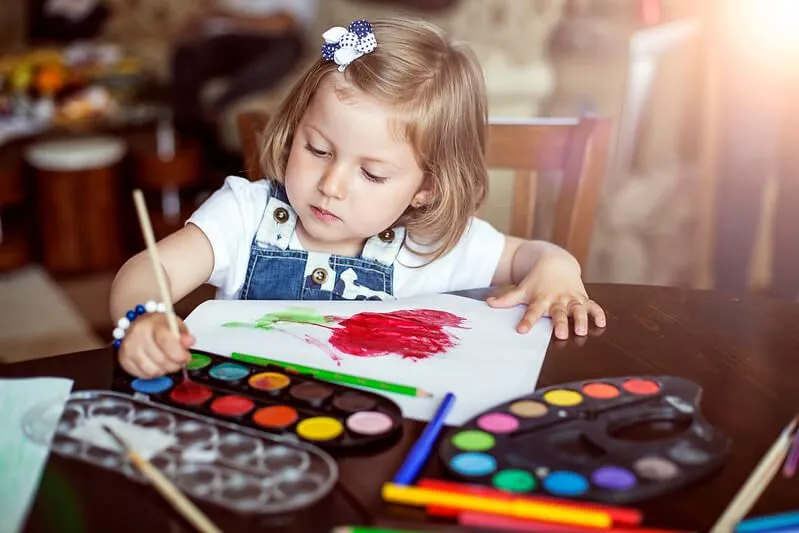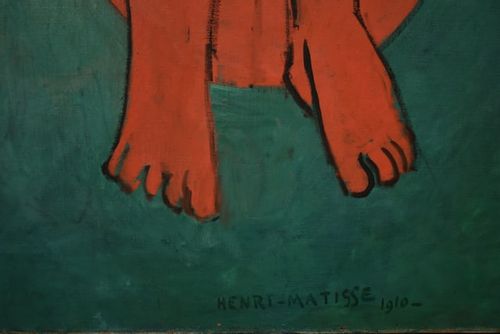FOR ALL AGES
In a nutshell, observational art is simply; "drawing what you see," it's a realistic portrayal of what's in front of you. This skill has so many benefits, as well as developing you and your child's drawing skills, it also improves accuracy and concentration.
It's the perfect drawing activity for all ages from; toddlers to teens and you can get involved too, it's fun to decide what to draw and see how you all interpret the same object.
The beauty of observational drawing for kids is that they are simply drawing what's in front of them and the subject can be anything from; a flower, a person, still life, like a bowl of fruit or a landscape. As long as the representation is a realistic portrayal, then they are on the right lines.
If you're looking for inspiration, search around your house for every-day objects. Examples include; a candle, an egg, an orange, it doesn't have to be anything complicated, it's better to start with something you feel you can draw, rather than feeling frustrated. So, now you are ready to start.
Paper
Pencils, a range of 2B and 3B
Erasers
Pencil sharpener
A subject
Pick a subject or item which you find interesting, put it in front of you and take time to really study it, the object could be as simple as a tomato cut in half, consider the following;
Texture
Shapes and Pattern
Colours and contours
Shadows
Light and shade
Perspective
For example, If you are drawing a banana, consider its shape, any imperfections (like bruising), colour differentiation, texture and tone. Start with doing a loose outline, try to make it as accurate as you can, considering its position on the page and perspective, so if the banana is next to a jug, make sure it is in proportion. You don't want to see a giant banana next to a tiny jug!
Look back and forth between the object you are drawing and your paper as many times as you can, ensuring you are portraying the subject as accurately as you can.
Now, consider detail, shading and pattern and colour.
If you make a mistake, don't worry, rub it out, once happy with your outline, you can start shading.
Don't rush the drawing, the beauty of observational drawing is that you are taking your time and really looking at the smaller details, which would normally be overlooked.
A common error, made, even by experienced artists, is drawing what you think you see, rather than what you are actually seeing. The purpose of this activity is to really focus and to make your artistic interpretation as realistic as possible.
Don’t rush: Take time, the beauty of your kids doing drawing activities at home, rather than at school is they are not under pressure to finish in a fixed time frame. If they can only draw for 40 minutes, that's fine, they can always re-visit the next day and add more detail.
Art is subjective: This means, there is no right or wrong, especially when kids are developing their own style, they should feel free to express themselves, without being overly criticised and feeling too self-conscious.
Practice makes perfect: Build up confidence by practising and trying out different techniques, some may work better than others.
Learn by your mistakes: Mistakes are part of learning and without the mistakes, you can't improve, so if you're not happy with what you have drawn, that's fine just rub it out or start again.

Even the most professional artists use observational drawings to help improve their technique.
Cross Hatching
This is an artistic technique used to create tonal shading, lines are placed as an angle to one another. This can be used by varying the length and angle, using the pencil.
Outlines
Be aware, real objects don't have bold, dark lines around them, so try and avoid this.

Be encouraging, and try not to be too critical as this will only knock their confidence.
Ask your child how they think their picture can be improved, share ideas. If the drawing looks "made up" it won't be realistic and so point out what makes the object what it is, look at the details, it could be the small crack in the bowl, the tiny dents in the orange, the pips in the tomato.
Observational drawing is a wonderful way to get kids to focus and wind down, particularly beneficial for children who may be anxious or have problems concentrating.
Learning how to draw shouldn't be a chore, it should be a pleasure, so make ensure the timing is right and your child is relaxed and in the right mind frame.
You don't need to spend a fortune on expensive art materials, an A4 piece of paper, pencils, crayons and paints are all you need, hopefully, items you already have around the house.
Giving gentle suggestions will help your child learn and build upon the drawing skills, they already know.
Host an art exhibition and share your new art skills with your child's family and friends.
Give your child's best artwork to a grandparent, elderly relative or neighbour to cheer them up, a unique, personal gift they can put on their wall.
Don't forget to get your child to sign their masterpiece, it might be worth a fortune one day!
Read The Disclaimer
At Kidadl we pride ourselves on offering families original ideas to make the most of time spent together at home or out and about, wherever you are in the world. We strive to recommend the very best things that are suggested by our community and are things we would do ourselves - our aim is to be the trusted friend to parents.
We try our very best, but cannot guarantee perfection. We will always aim to give you accurate information at the date of publication - however, information does change, so it’s important you do your own research, double-check and make the decision that is right for your family.
Kidadl provides inspiration to entertain and educate your children. We recognise that not all activities and ideas are appropriate and suitable for all children and families or in all circumstances. Our recommended activities are based on age but these are a guide. We recommend that these ideas are used as inspiration, that ideas are undertaken with appropriate adult supervision, and that each adult uses their own discretion and knowledge of their children to consider the safety and suitability.
Kidadl cannot accept liability for the execution of these ideas, and parental supervision is advised at all times, as safety is paramount. Anyone using the information provided by Kidadl does so at their own risk and we can not accept liability if things go wrong.
Kidadl is independent and to make our service free to you the reader we are supported by advertising.
We hope you love our recommendations for products and services! What we suggest is selected independently by the Kidadl team. If you purchase using the buy now button we may earn a small commission. This does not influence our choices. Please note: prices are correct and items are available at the time the article was published.
Kidadl has a number of affiliate partners that we work with including Amazon. Please note that Kidadl is a participant in the Amazon Services LLC Associates Program, an affiliate advertising program designed to provide a means for sites to earn advertising fees by advertising and linking to amazon.
We also link to other websites, but are not responsible for their content.
Was this article helpful?



Browse Category



We’ll send you tons of inspiration to help you find a hidden gem in your local area or plan a big day out.



Check your inbox for your latest news from us. You have subscribed to:
Remember that you can always manage your preferences or unsubscribe through the link at the foot of each newsletter.